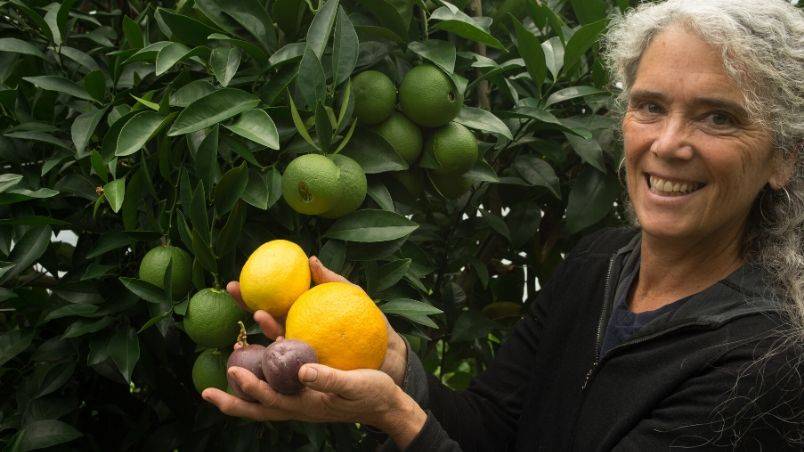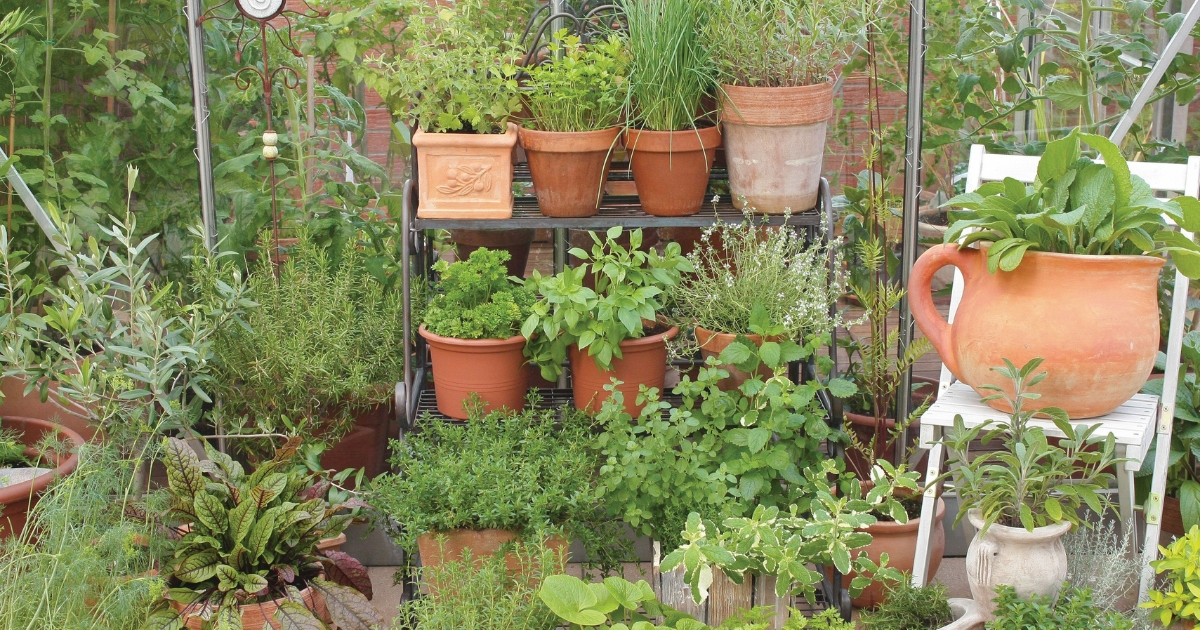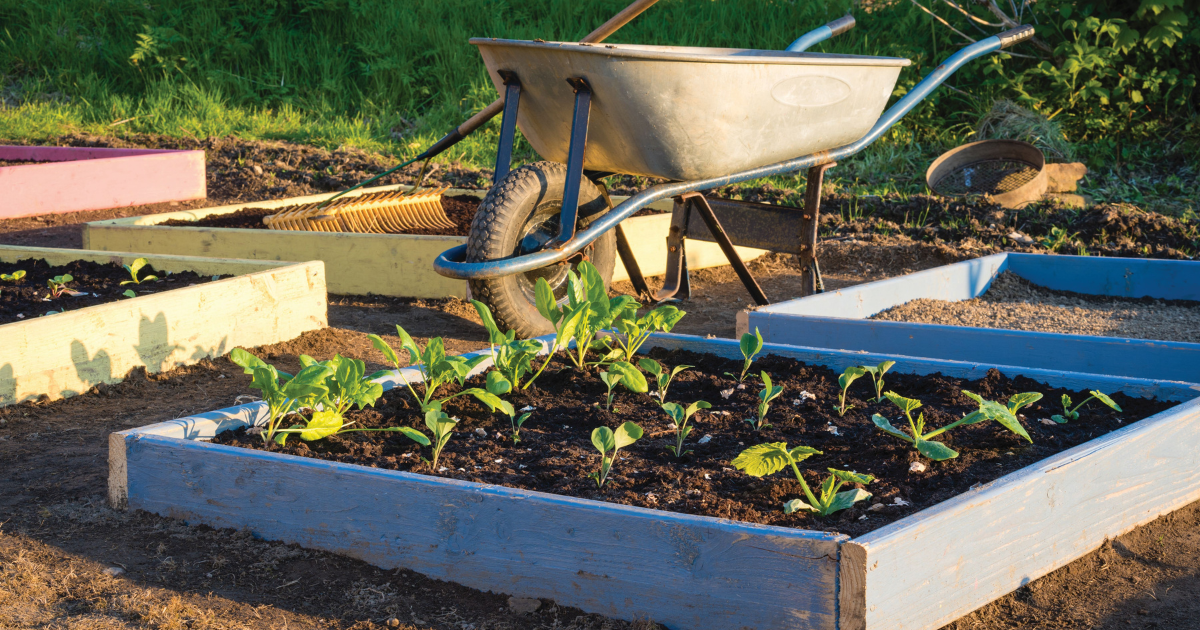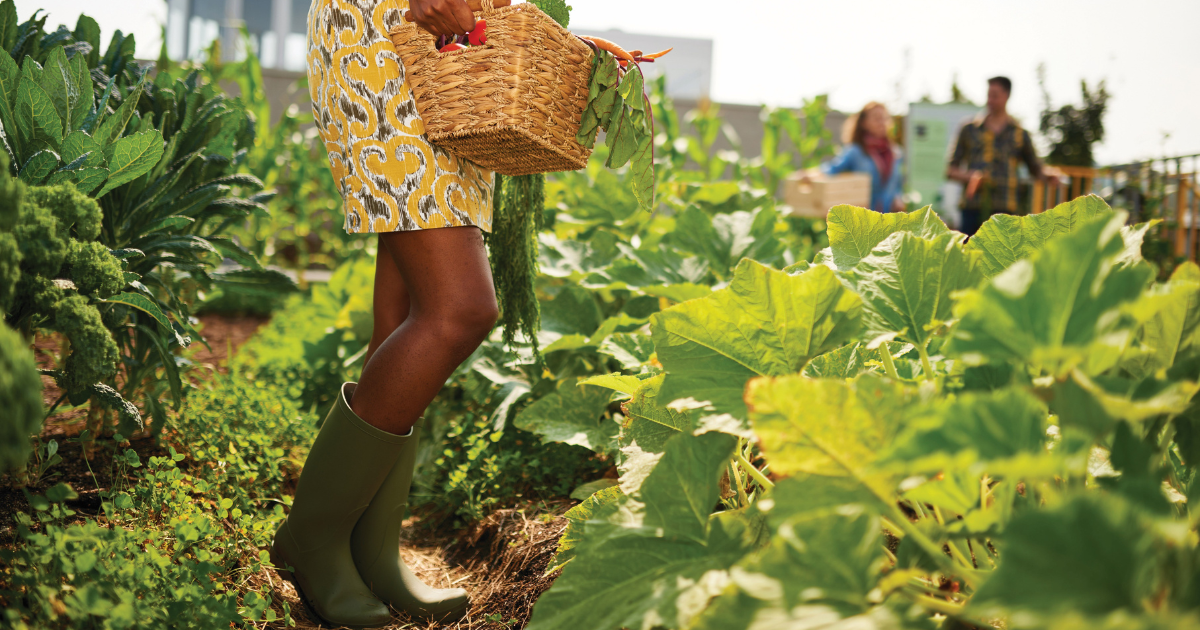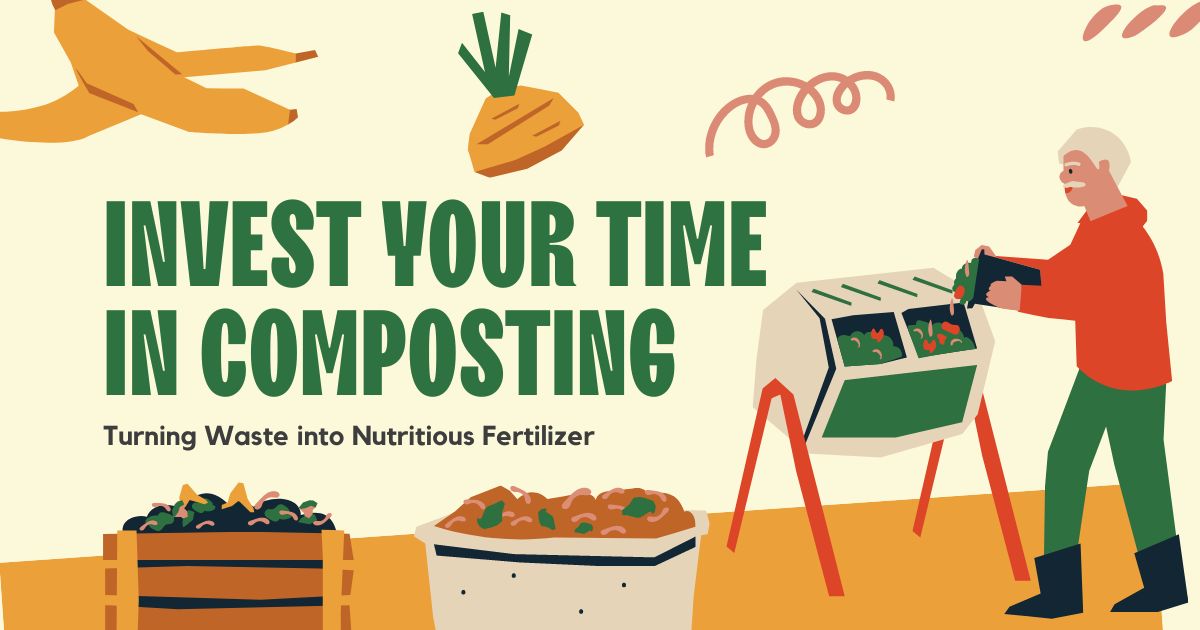I live on Salt Spring Island, British Columbia, one of the mildest climatic zones in Canada, where I grow figs, cherries, plums, walnuts, kiwi and copious other fruit and nuts on my three-acre farm. Japanese fibre bananas and pomegranates survive the winters unprotected, though they rarely produce mature fruit.

For 24 years, I have earned my income on Salt Spring growing hydroponic lettuce and basil for the local wholesale market in a 6,000-square-foot greenhouse (thegardensaltspring.com). With retirement looming on the horizon and a desire to reduce my workload without abandoning the greenhouse, I am making some big changes. Now only one-third of the greenhouse is dedicated to hydroponics; the other two-thirds is planted with subtropical fruit. Instead of purchasing citrus, avocados, turmeric and ginger from the grocery store, I now walk a hundred steps from my kitchen to the greenhouse and harvest these items in season within minutes. Fruit on my farm ripens every month of the year. And the challenge to do this with renewable resources as efficiently and effectively as possible is my modus operandi.

I learned to love agriculture from my mother, who grew up on a farm in Nova Scotia. Her father went “back to the land” after the First World War, and the stories of her childhood are riveting.
Later, when I was living in Alberta, I decided to pursue a career in horticulture. The severe winters and sudden shifts in temperature from chinook winds impose serious limits in the options for making a living in that field, but I was enthusiastic to take on the challenge.
As a student, I worked at the Brooks Research Station, where, among other things, I learned about their cold-hardy and disease-resistant apple trials. Years later, in Zone 3a west of Calgary, I was able to grow a decent crop of hardy apples espaliered to the east wall of my house. This is an area where frost would visit every month of the year except July.
Besides the impact of climate on production, I learned the importance of abundant and good-quality water. I worked on a market garden in B.C.’s Interior for two summers. The farm was off-grid and we had a long series of pipes diverting water from the creek, with enough pressure from the elevation drop to supply pivot sprinklers. The farm was a brilliant green and productive oasis surrounded by sage brush and ponderosa pines.
A few years later, I was introduced to tropical agriculture when I worked as a district horticulturist in Papua New Guinea from 1980 to 1982. There, people were experiencing a decline in their soil fertility as a result of population pressure. The lack of protein in their diet was causing serious malnutrition, especially evident in the children’s health. My role was to teach more expedient soil-building techniques through composting, rotations and the use of nitrogen-fixing plants and trees. To address malnutrition, we introduced protein-rich crops and established a tree nursery full of highly valued tropical fruit and nut trees not yet seen in their area. It was interesting to discover how enthusiastic and receptive people were to this information and the resources depending on their personal experience. People living in the sparsely populated southern region had no interest whatsoever, as their fallow periods were still long enough to build soil fertility and their gardens were highly productive.
When we returned to Canada in 1982, my then-husband and I decided to start our own farm west of Calgary on family property. We researched our options and set up one of the first hydroponic lettuce greenhouses in Canada for year-round production of butter lettuce. Though the winter is long and cold, the benefits of substantial winter sun and inexpensive gas made growing a high-quality product viable and financially rewarding. After two years, we expanded and installed state-of-the-art computerized operating systems.
We sold the operation in 1993 and moved our family of five to Salt Spring Island. We purchased a three-acre property, built a home for ourselves and the 6,000-square-foot greenhouse that we estimated would be sufficient to provide an income for our family and produce for the island and local towns on nearby Vancouver Island. Using the hydroponic technologies we had pioneered in Calgary, we were soon in production. In short order we got rid of the invasive broom plants that covered the front acre, built several gardens and planted a variety of fruit and nut trees. For the next six years, we ran our farm together, producing lettuce from the hydroponic system and harvesting nuts, fruit, berries and produce from the gardens. With a lot of hard work, we were well on our way to being food self-sufficient and the property was looking more beautiful every year, with rose trellises, rhododendrons and a great variety of flowering shrubs and bushes surrounding the house.

Not everything lasts, however, and in 2001 my husband and I parted company. I found myself on my own, running the hydroponic business and keeping everything else in motion. This meant learning new skills and becoming even more proficient at fixing small motors, doing my own plumbing and troubleshooting a complex operation with many moving parts.
Water can be a real issue on the Gulf Islands, so I expanded the rainwater storage to over 227,125 litres (60,000 gallons) in above-ground pools and tanks. Rainwater is collected from the roof of the greenhouse and my house, and this quantity provides sufficient water to operate the greenhouse for four months without rain. Our summers can be extremely dry, as is evidenced by small cacti growing on the south end of the island.
As I settled into my new pattern, I started to get new ideas about streamlining my production, reducing my footprint and learning about new technologies. I found I was spending a lot of time contemplating what is important in designing a food-producing environment. And I came up with the following list of what the environment should do:

- Be efficient in its use of renewable energy
- Be resilient to climatic impact
- Have the potential for cost effectiveness
- Produce food that meets the dietary interests of the locals
- Reduce reliance on imported products
- Use automation wherever possible to increase efficiency and reduce labour time and expense
In 2006, I began experimenting with “closing the nutrient loop” by attempting to create a stable hydroponic solution from my greenhouse waste. I didn’t have much luck until I came across digestate made from beets, and this led me to learn about anaerobic digestion, a process by which microorganisms break down organic matter in the absence of oxygen. On a short trip to India, I visited an institute on the edge of Bangalore that was providing its own power through the use of an anaerobic digester, which captured and purified methane gas that was burned cleanly in gas turbines to provide electricity. Water hyacinths growing in the adjacent marsh provided all the required energy. They were collected, macerated, pasteurized and put through the digester as feedstock. The resultant digestate was used as a fertilizer.
Soon after I returned home, I made the acquaintance of a young engineer who was designing and building small-scale anaerobic digesters and I commissioned him to build me one. I now have the means to effectively compost my kitchen, garden and hydroponic leftovers, and I end up with a rich fertilizer and a constant supply of methane, which I use for winter CO2 enhancement in the greenhouse, pasteurization and to cook my morning coffee!
In 2014, I took the plunge and began the work of transitioning my greenhouse to growing subtropical trees. I removed the 20-year-old plastic covering the subsoil, and the task of building a healthy soil began. I ended up with 25 cubic yards (675 cubic feet) of extra fill, and with the help of Google, I discovered an ingenious way to build thermal walls right inside the greenhouse. Hyperadobe! I enlisted a cadre of friends to help me build it along the north face of the greenhouse. This wall helps insulate the greenhouse and stabilizes the heat and moisture.

For further thermal mass, I partially buried a 16-foot-diameter tank and extended the wall to surround it. In the winter, the 17,034 litres (4,500 gallons) of water in the pool are heated to as high as 45°C (113°F) to act as a heat sink to keep the plants from freezing. The greenhouse (6,000 square feet) is heated hydronically with a high-efficiency wood gasifier furnace located just outside its entrance. With the help of thermal mass and other energy-saving techniques, I am able to heat the space with less than four cords of wood a year.Automated systems allow me to run the farm single handedly with an average of six hours of help per week during the summer months.
My work is attracting attention now and is inspiring others to be creative in their approach to sustainable farm design.
With the increase in weather events due to climate change, traditional farming practices are becoming less reliable, and as a result, greenhouse and controlled-environment agriculture is expanding rapidly throughout the world. On a recent trip to Europe, I was amazed by the expanse of poly greenhouses lining the south coast of Spain, even visible from space! In Crete, I saw acres of bananas growing in unheated greenhouses.
After witnessing a couple of greenhouse business failures as a result of inefficient and unduly complicated system design, I decided to offer workshops that would equip participants with the basic knowledge of what it takes to create a healthy greenhouse growing environment, from venting to heating, growing techniques to integrated pest management, plus emerging technologies. I call the workshop Sustainable Greenhouse Design and offer it during the fall and winter.
At present, my own greenhouse oasis is planted with 40 varieties of citrus, avocado, pineapple guava, passion fruit, jujube, banana and the list goes on! Although I’ve been at this for more than 40 years, the joy and enthusiasm hasn’t diminished. The potential to integrate new crops and techniques seems endless, and I love the process of research, experimentation and application. I hope learning about my work will inspire others to pursue their own creative path.
Jane Squier has over 40 years of hands-on experience operating successful small- and medium-sized greenhouse businesses and market gardens. She has operated both organic and hydroponic systems in tropical, Mediterranean and cold (Zone 3) climates.
Jane is constantly working to refine the choice of plant material, growing methods and technologies to create an efficient, sustainable and economically viable lifestyle business.

